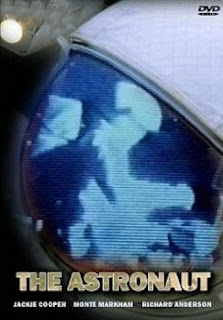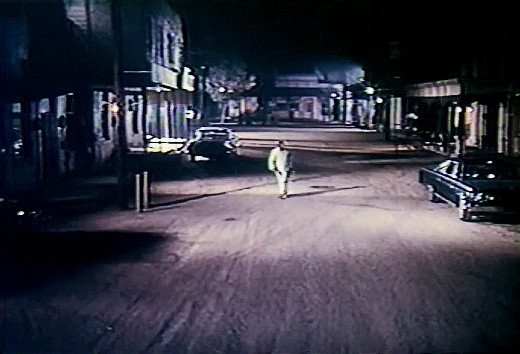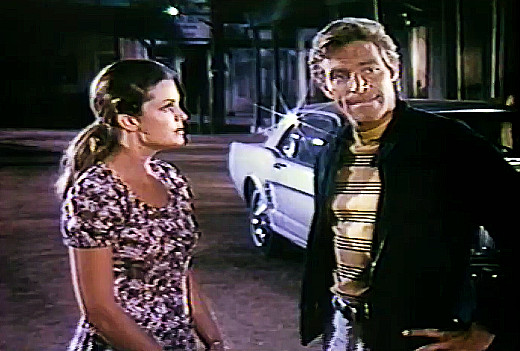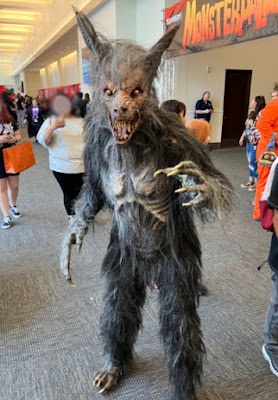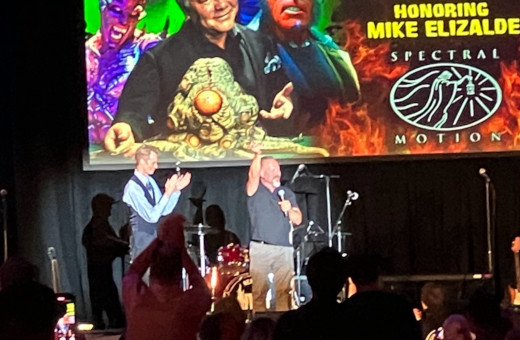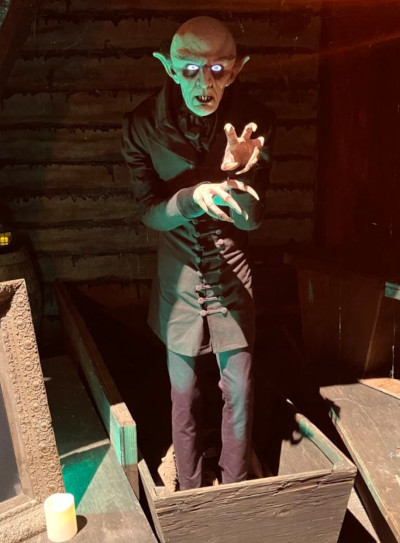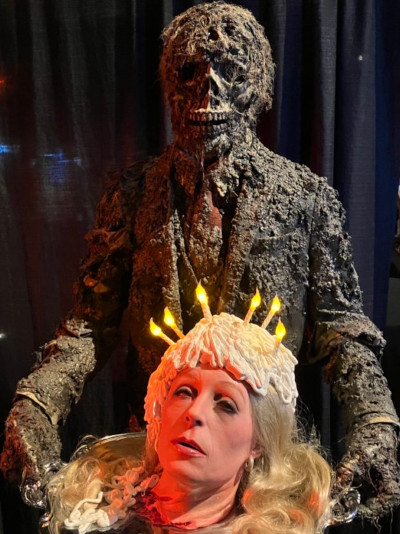Pros: Good, affecting performances by Monte Markham and Susan Clark as two lonely people caught up in a government conspiracy
Cons: The rationale for the conspiracy and its incompetent execution strain credulity
Back in 2019, a YouGov poll commemorating the 50th anniversary of the Apollo 11 moon landing found that 20% of respondents believed that it was definitely or probably true that the landing was faked. Such skepticism has existed almost since the moment Neil Armstrong took that “one small step” on the lunar surface, but many were dismayed that 50 years on, the endlessly debunked theory still had traction.
In 1977 the conspiracy theory reached its entertainment apogee with Capricorn One, about NASA officials secretly scrapping a mission to Mars when defects in the spacecraft are discovered, but staging a landing in order to ensure further program funding. When an investigative reporter (Elliott Gould) starts snooping around, and the empty returning capsule burns up in the atmosphere on re-entry, the fake mission’s astronauts (James Brolin, Sam Waterston and O.J. Simpson) realize they have become a liability the agency will have to deal with in order to keep its secrets.
A full five years before Capricorn One (and while the Apollo program was still sending men to the moon), a TV movie, The Astronaut, featured yet another convoluted government plot to snow the public.
In this one, the heads of the Mars mission at the U.S. Department of Space (renamed perhaps to spare the feelings of real-life NASA administrators) implement a back-up plan when the first man on Mars, Col. Brice Randolph, mysteriously dies during an EVA on the surface (they’re able to cut the video feed before the public can figure out what’s going on).
In order to buy time to find the cause of the astronaut’s death and prevent the President from shutting down the program altogether, the administrators implement a back-up plan: find a double for Randolph, sneak him into the spacecraft when it splashes down with the surviving astronaut, pretend the mission was a success, parade the double around for the benefit of the public, stage a boating accident in which “Randolph” goes permanently missing, and finally, give the double a new face and a new life. (Whew! I think I’d just take the “win” of having successfully landed an astronaut on Mars, acknowledge that there are many dangerous unknowns in spaceflight, and wait for a new president who is more pro-space program. But then, that would make for a very dull movie.)
They find a look-alike, Eddie Reese (Monte Markham), who is a disgraced ex-pilot who ejected from a jet that crashed and killed three people on the ground, and has been wandering from job to job ever since. As the spacecraft with the surviving astronaut heads home, Reese’s face is altered to be identical to Randolph’s (“We have the technology!”), and from tapes, he learns to talk, walk and act like Randolph.
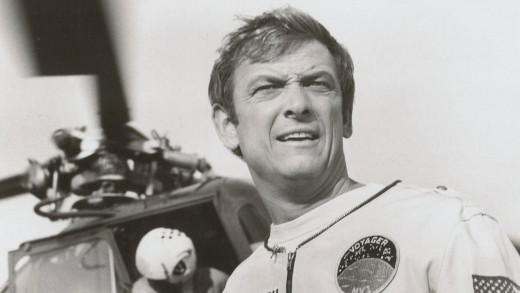 |
| "We can rebuild him. We have the technology. We can make him better than he was..." Oops, wrong TV show! |
As if that weren’t enough disbelief to suspend, the mission head honcho Kurt Anderson (Jackie Cooper), delays telling Randolph's wife Gail (Susan Clark) the bad news, as she has recently had a miscarriage and is emotionally vulnerable. So, once the plan is put into effect and the mission is publicly celebrated as a success, Anderson sends Reese/Randolph home to Gail, much to Reese’s extreme discomfort. (!?)
The Astronaut indulges in the old Hollywood fantasy that plastic surgery can create a double so exact that (s)he can fool even people who know them intimately. I’m prepared to accept that you could put one over on the public whose only exposure to the celebrity was through grainy TV broadcasts and newspaper photos (this was 1972 after all), but fooling a wife who knows all her husband’s moles and various other (ahem) idiosyncrasies … I don’t think so.
And then there’s the idea of rushing plan B into action based on the certainty that the program will be toast once the news of Randolph’s death breaks. A couple of times Anderson talks about “buying time” until they can figure out what killed the Colonel, as if the moment it became public knowledge funds would be completely cut off (and as if the senior Congresspeople whose districts benefited from the space program wouldn’t have a say in it). This seems to be a very naive view of how government works.
 |
| Mission head Kurt Anderson (Jackie Cooper, left) contemplates saying goodbye to his pension if word gets out. |
HOUSTON, WE HAVE A PROBLEM WITH SOME MILD SPOILERS
Shaky premise or not, the movie builds to a very effective (and affecting) crisis when Gail recovers enough from the loss of her baby to discover that her husband is not her husband. The movie suggests that it’s not so much minute physical differences that betray the imposter (although at one point, while Eddie and Gail are holding hands, Gail remarks that his hands seem somehow smaller… okay people, get your minds out of the gutter!).
Gail tells Eddie that she knew he couldn’t be Randolph, because he's been too kind and gentle with her. It seems the Colonel was, like a good military man and astronaut, all about the work, and to add insult to injury had spent most of the marriage belittling Gail’s hopes and dreams, including her desire for a family.
In an irony of ironies, the space program, like some behemoth fairy godmother, has sent Gail a tender, caring version of her husband at the time of her greatest need. And Reese, who has been shunned by society for a moment of tragic weakness, has found a reason to live in Gail.
 |
| Gail (Susan Clark) starts to figure out this man is not her husband. |
When the couple inform the higher-ups that Gail is in on the plot, Anderson graciously agrees to let the two disappear together in the boating accident. But complications ensue when Eddie and Gail find out that by going ahead with the plan, lives will be put in danger (and that’s all the spoilers you’re going to get).
Susan Clark is wonderful as a woman who, on the verge of a breakdown, recovers her equanimity and self-respect under the most unusual of circumstances. Trained at the London’s prestigious Royal Academy of the Dramatic Arts, Clark secured a contract with Universal Studios in the mid-’60s, eventually playing opposite the likes of Clint Eastwood in Coogan’s Bluff (1968), Richard Widmark and Henry Fonda in Madigan (1968), and Robert Redford in Tell Them Willie Boy is Here (1969).
Television dominated in the ‘70s, which saw her in such high profile TV movie roles as Babe (1976; playing the golfing legend “Babe” Zaharias) and the title role of Amelia Earhart the following year. Two years before The Astronaut, she co-starred with Eric Braeden in Colossus: The Forbin Project (1970), the sci-fi classic about artificial intelligence run-amok (timelier than ever!).
In The Astronaut, Monte Markham has the singular challenge of being an actor playing a disgraced pilot pretending to be an astronaut. Now in his late 80s, Markham has done it all, with multitudinous acting, producing and directing credits. He even started his own production company in the early ‘90s.
Monte’s big break came as the lead in the TV comedy The Second Hundred Years (1967-68) playing a man who is revived after spending decades in accidental suspended animation. After that he parlayed his stolid, “Everyman” presence into dozens upon dozens of movie and TV roles in every genre. And like the Energizer Bunny, he’s still going, with IMDb listing acting credits as recent as this year, and as if that’s not enough, 5 upcoming projects.
 |
| "To be Brice Randolph or not to be Brice Randolph, that is the question..." |
Where to find it: Streaming (low-res and soft-looking copy, but watchable)

